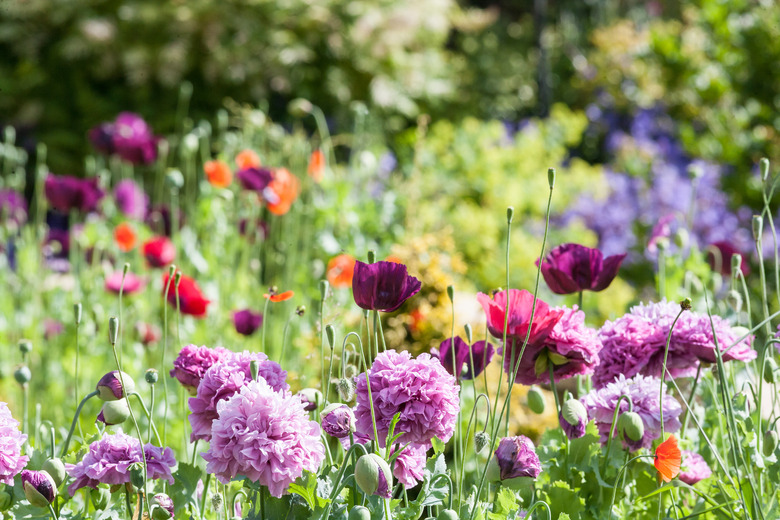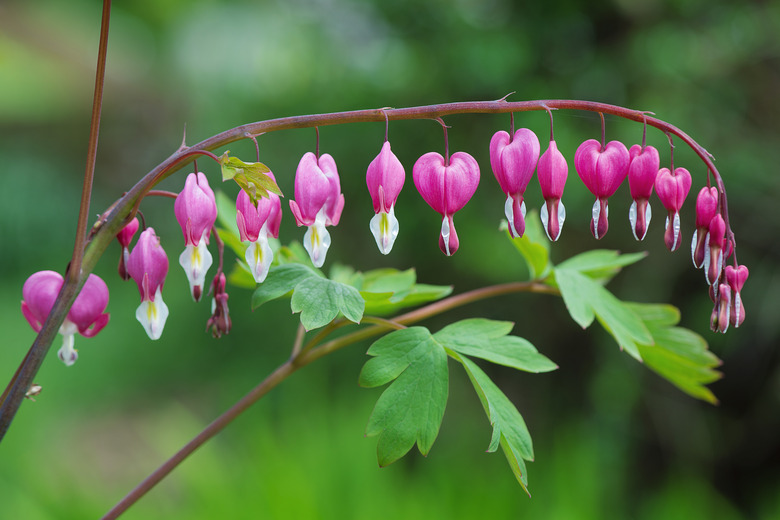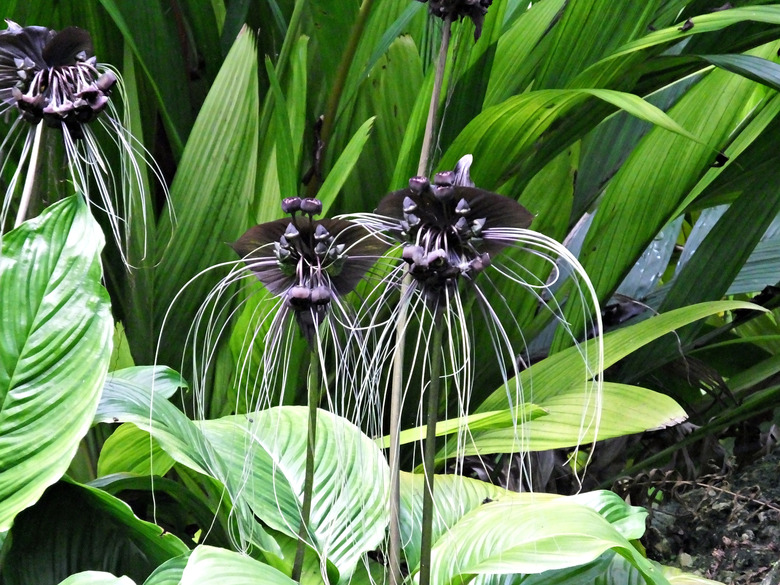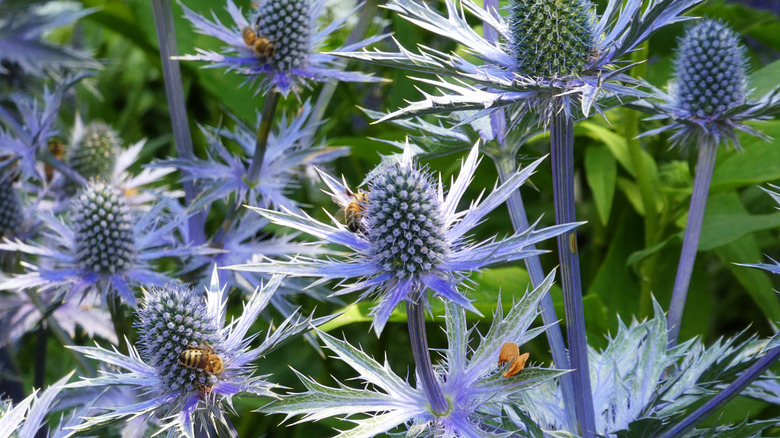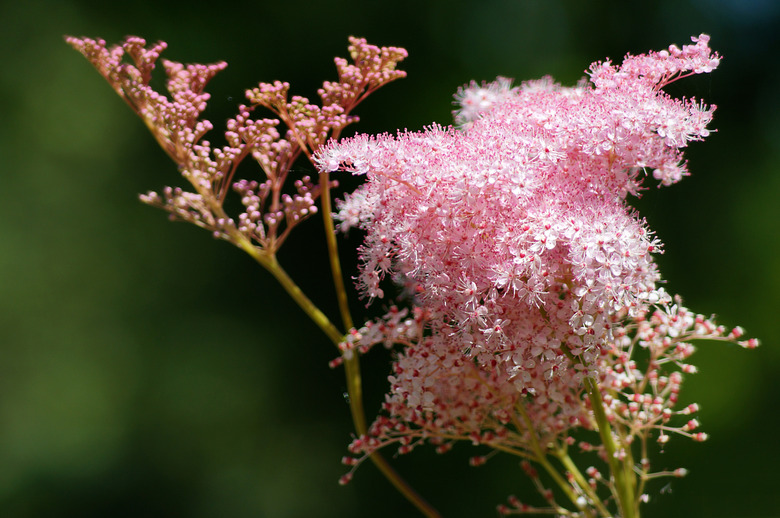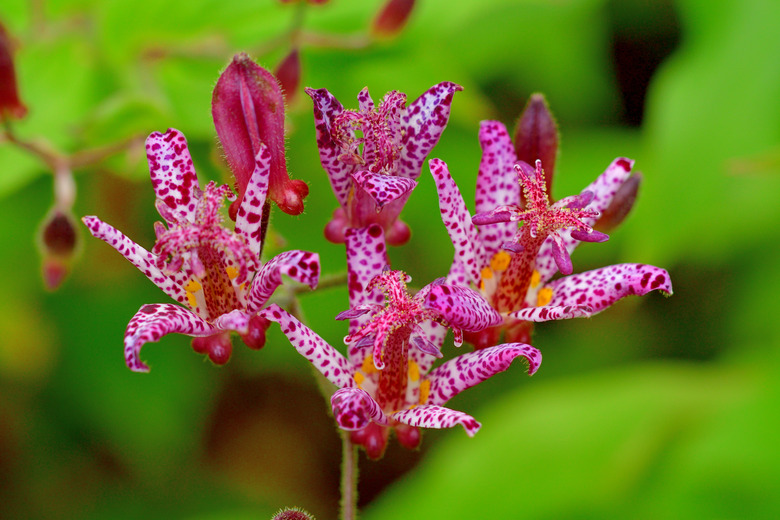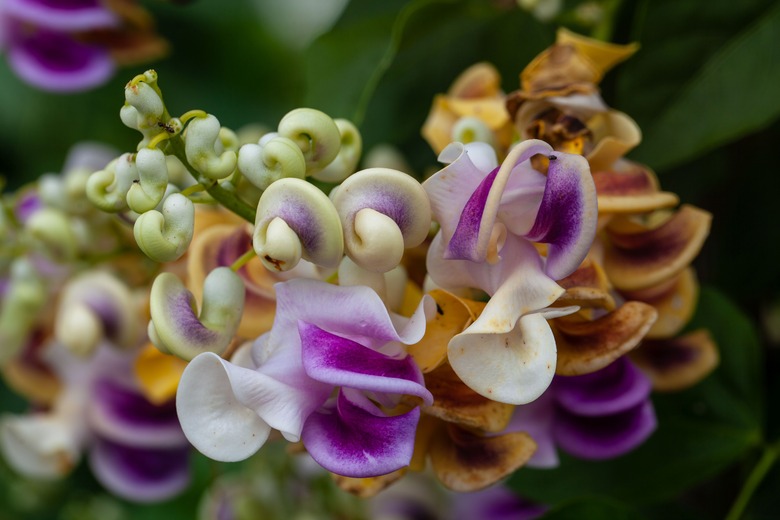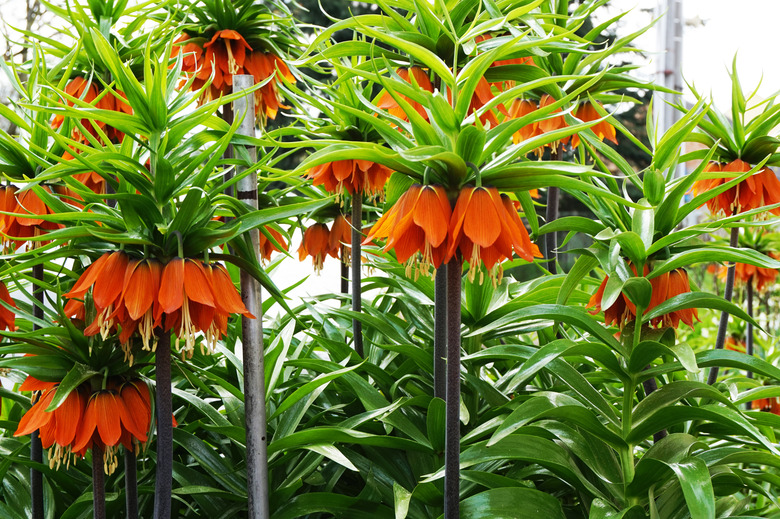8 Unexpected Flowers To Grow In Your Garden This Year
Of the approximately 350,000 species of vascular plants in the world, 93 percent are flowering plants. So, why are so many gardens overwhelmingly filled with the same types of flowers? Yes, roses, hydrangeas, gladiolus, mums, irises, tulips, daisies, and other common flowers have their charms, but so do rare species no one else in your neighborhood has. Plant some uncommon finds next to your petunias and daffodils to add some fun surprises to your garden or eliminate the usual suspects entirely to create a truly unique and utterly unforgettable landscape. As a bonus, many of these species also make excellent cut stems, so by planting these flowers, you're also setting yourself up for some delightfully different bouquets.
1. Bleeding Heart
1. Bleeding Heart
As if the name wasn't different enough, this striking plant produces 3-foot-tall stems bearing rows of seven to 15 heart-shaped blooms in pink and white. Bleeding hearts make excellent cut flowers, and deadheading can extend the blooming season, so bring them inside so you can enjoy these beautiful buds as long as possible.
|
Scientific name: |
Lamprocapnosi spectabilis |
|
USDA hardiness zones: |
3-9 |
|
When to plant: |
Spring or fall |
|
When they bloom: |
Spring to early summer |
|
Colors: |
Pink and white |
|
Size: |
2-3 feet |
|
Sun exposure: |
Morning sun with afternoon shade |
|
Soil: |
Neutral to slightly alkaline pH, well-draining, moist, and rich in nutrients |
2. Bat Flower
2. Bat Flower
With dramatic 6-inch black or white bracts resembling bats in flight, long tendrils that look like spider legs, and flower clusters reminiscent of eyes, the bat flower is one of the most unique-looking flowers you can grow at home. Also known as the devil flower or cat's whiskers, this unusual bloom is native to Malaysia, where it grows in dense rain forest undergrowth, so keep it away from sunlight. Because they can't handle cold weather, these beauties should be grown in containers in most climates so they can be brought indoors during winter.
|
Scientific name: |
Tacca chantieri |
|
USDA hardiness zones: |
10-12 |
|
When to plant: |
Spring |
|
When they bloom: |
Late summer through fall |
|
Colors: |
Black and white |
|
Size: |
Up to 4 feet tall |
|
Sun exposure: |
Shade |
|
Soil: |
Constantly moist, acidic, fertile, well-draining |
3. Globe Thistle
3. Globe Thistle
The globe thistle's perfectly round, blue, 1- to 2-inch spiky heads look like something from a Dr. Seuss book. Its novel appearance will attract attention to any landscape, fresh bouquet, or dried floral arrangement. This drought- and heat-resistant bloom is a favorite of pollinators like bees and butterflies but is disliked by both rabbits and deer.
|
Scientific name: |
Echinops ritro |
|
USDA hardiness zones: |
2-8 |
|
When to plant: |
Midspring |
|
When they bloom: |
Midsummer through early fall |
|
Colors: |
Blue |
|
Size: |
2-4 feet tall |
|
Sun exposure: |
Full sun |
|
Soil: |
Well draining, not overly fertile |
4. Blue Sea Holly
4. Blue Sea Holly
Sea holly has spiky blue flowers reminiscent of thistles that look fabulous in fresh or dried floral arrangements. The more sun you give this sunshine lover, the brighter the blooms you'll get. Choose the blue cap variety with a blue stem for a truly dramatic sight.
|
Scientific name: |
Eryngium planum |
|
USDA hardiness zones: |
5-9 |
|
When to plant: |
Fall |
|
When they bloom: |
June through September |
|
Colors: |
Blue |
|
Size: |
2 to 3 feet tall |
|
Sun exposure: |
Full sun |
|
Soil: |
Well draining, mostly dry, sandy or loamy, not overly rich |
5. Queen of the Prairie
5. Queen of the Prairie
There's nothing quite like the look of cherry blossoms in bloom ... except maybe queen of the prairie, which grows dozens of fragrant, fluffy pink or white blossoms that resemble mini cherry blossom trees. Some varieties of this shrub can grow up to 8 feet tall, so plan your landscape accordingly so it doesn't end up blocking your view of other plants.
|
Scientific name: |
Filipendula rubra |
|
USDA hardiness zones: |
3-8 |
|
When to plant: |
Spring |
|
When they bloom: |
June to August |
|
Colors: |
Pink, white |
|
Size: |
6-8 feet tall |
|
Sun exposure: |
Full sun to part shade |
|
Soil: |
Acidic, moist, fertile, humusy |
6. Toad Lily
6. Toad Lily
Not technically a "true lily," toad lilies have distinctively delightful, 2-inch spotted blooms resembling orchids. Unlike orchids, though, these plants grow on leafy shrubs that are beautiful in their own right, especially the species with variegated leaves. These shade-loving, moisture-craving plants bloom in early fall, long after many flowering plants have gone dormant.
|
Scientific name: |
Tricyrtis spp. |
|
USDA hardiness zones: |
4-9 |
|
When to plant: |
Spring |
|
When they bloom: |
September |
|
Colors: |
White, yellow, purple, blue, and pink, featuring spots of the same colors |
|
Size: |
1 to 3 feet |
|
Sun exposure: |
Part to full shade |
|
Soil: |
Rich, consistently moist, well-draining, slightly acidic |
7. Snail Vine
7. Snail Vine
Also known as the corkscrew vine, one quick look at the blooms is enough to see where the snail vine gets its name: The plant's fragrant, delicate blossoms spiral around like snail shells. Best of all, they're easy to grow and germinate, and the hotter the weather, the bigger they'll grow.
|
Scientific name: |
Cochliasanthus caracalla |
|
USDA hardiness zones: |
9-12 |
|
When to plant: |
Spring |
|
When they bloom: |
July through October |
|
Colors: |
White and purple |
|
Size: |
Up to 30 feet tall |
|
Sun exposure: |
Full sun |
|
Soil: |
Moist, rich, well-draining |
8. Crown Imperial
8. Crown Imperial
These bulbs grow similarly to other lily species, with a long, straight stalk adorned with leaves. What makes the crown imperial distinctive are its downward-facing flowers that bloom below a crown of foliage.
|
Scientific name: |
Fritillaria imperialis |
|
USDA hardiness zones: |
5-9 |
|
When to plant: |
Fall |
|
When they bloom: |
April to June |
|
Colors: |
Yellow, red, and orange |
|
Size: |
3-4 feet tall |
|
Sun exposure: |
Full sun to part shade |
|
Soil |
Fertile, well-draining |
